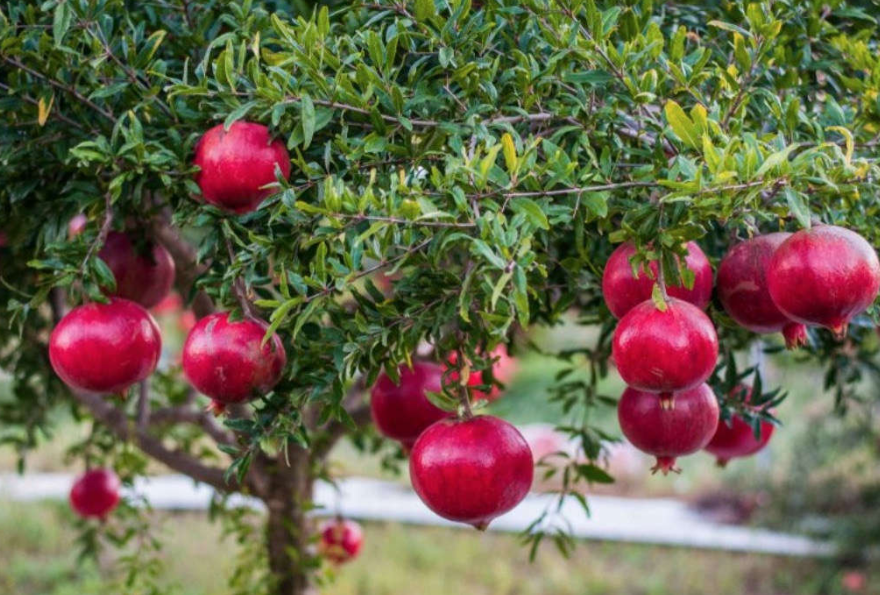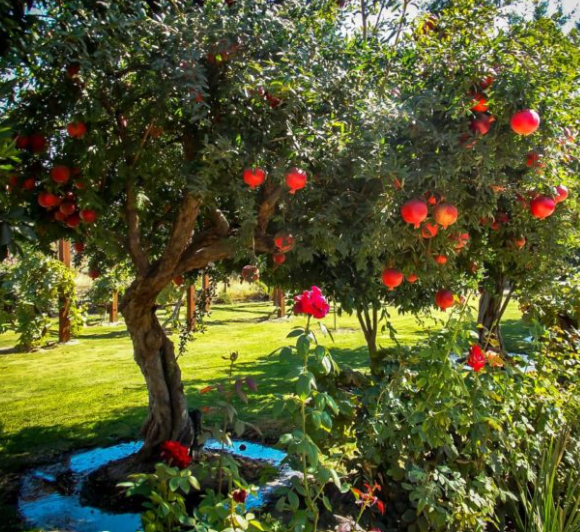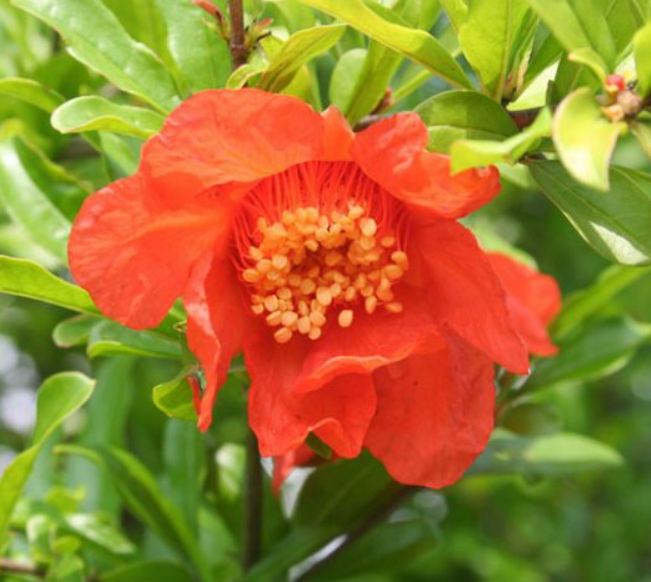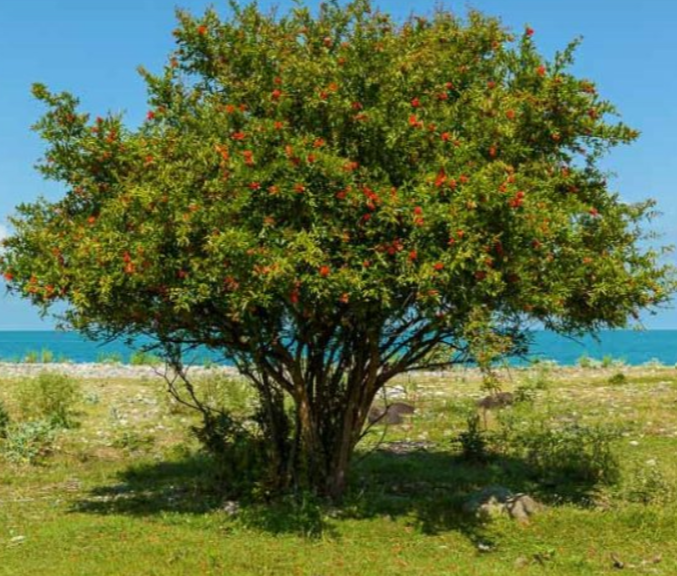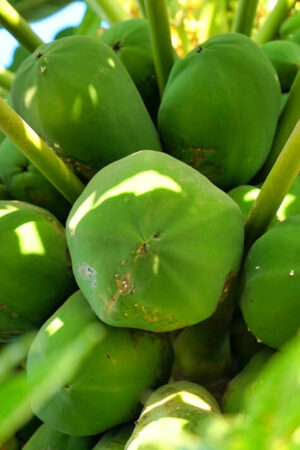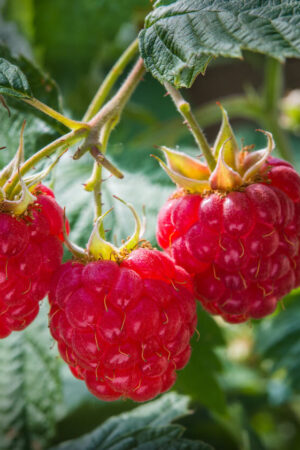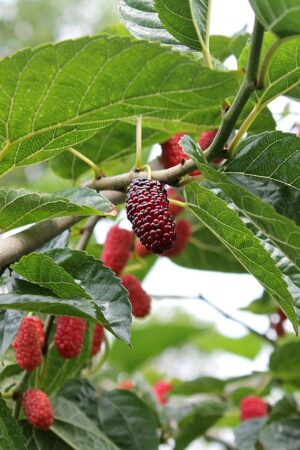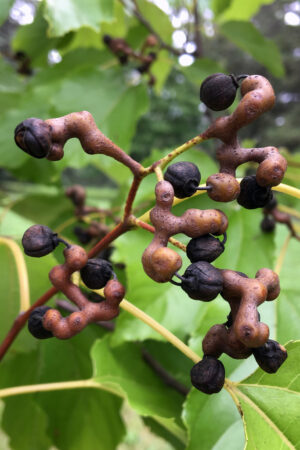Stunning, deciduous tree with glossy leaves and bright, scarlet-orange flowers in late spring and summer, followed by fruit in autumn. Great in containers or as a specimen in the garden. Vigorous and productive. Ideal as a hedge. Self fertile. Grows approximately 3m high x 3m wide.

Welcome to Clelands. Use our expertise, experience and knowledge to create your landscape dreams. For the most cost effective planting, use our design plant by number service.

Pomegranate
Punica granatum
Stunning, deciduous tree with glossy leaves and bright, scarlet-orange flowers in late spring and summer, followed by fruit in autumn. Great in containers or as a specimen in the garden. Vigorous and productive. Ideal as a hedge. Self fertile. Grows approximately 3m high x 3m wide.
$16.80 – $38.80
| Grade | 2L, PB12 |
|---|
Care guide:
Planting a pomegranate (Punica granatum) tree can bring beauty to your garden while providing delicious, nutrient-packed fruit. Pomegranates are hardy, drought-tolerant trees, but they still need some care to thrive. Here’s a detailed guide for planting and growing pomegranates:
- Sunlight: Pomegranates need full sun to produce the best fruit. Aim for at least 6 hours of direct sunlight per day, preferably more.
- Climate: Pomegranates thrive in warm, dry climates. They are best suited for USDA hardiness zones 8-10. They can tolerate temperatures down to 10°F (-12°C) when dormant, but they grow best in regions with long, hot summers.
- Soil: Pomegranates prefer well-draining, slightly acidic to neutral soil (pH 5.5 to 7.0). They tolerate poor, sandy soils but will perform better in fertile, loamy soil. Good drainage is crucial because they don’t like “wet feet,” which can lead to root rot.
- Spacing: If planting more than one tree, space them 10-12 feet apart to allow for their mature size.
- Best Time to Plant: The best time to plant pomegranates is in spring after the last frost or fall in warmer climates. This allows the tree to establish its roots before extreme temperatures hit.
- Digging the Hole: Dig a hole that is about twice the size of the root ball of the tree. This ensures that the roots have room to spread and establish themselves.
- Amend the Soil (if necessary): If your soil is heavy clay or poorly draining, amend it with organic matter such as compost to improve drainage. If planting in containers, choose a pot with good drainage holes.
- Place the Tree in the Hole: Gently remove the pomegranate tree from its pot. Set it in the hole, ensuring that the top of the root ball is level with the surrounding soil surface. Avoid planting the tree too deep, as this can suffocate the roots.
- Backfill the Hole: Fill in the hole with soil, gently pressing it around the roots. Water the tree thoroughly after planting to help settle the soil and eliminate air pockets around the roots.
- Watering: Water deeply after planting. For the first few weeks, ensure the soil stays consistently moist, but not soggy. Once established, pomegranates are quite drought-tolerant.
- Watering: Pomegranates are drought-tolerant but need regular watering when young. During the growing season (spring through summer), water deeply but allow the soil to dry out slightly between waterings. Reduce watering in winter when the tree is dormant. Avoid overhead watering to prevent fungal diseases.
- Fertilizing: Pomegranates don’t require much fertilizer. In early spring, apply a balanced, slow-release fertilizer. You can use a fertilizer higher in potassium (K) to encourage fruiting. Avoid over-fertilizing, as too much nitrogen can result in excessive leaf growth and poor fruit production.
- Pruning: Pomegranate trees can be trained into a bush or small tree form, depending on your preference. Pruning is most effective in late winter or early spring before new growth starts.Note: Pomegranates naturally grow as a shrub with multiple stems, so you can choose to either maintain this shape or prune the tree to a more traditional tree form.
- Remove dead or damaged wood.
- Thin the tree to improve air circulation and light penetration.
- Cut back any suckers that grow from the base of the tree.
- Shape the tree by removing branches that cross each other or rub against each other.
-
Pests:
- Aphids: They may infest the leaves, causing them to curl. Spray the tree with insecticidal soap or use a strong water jet to remove aphids.
- Whiteflies: Common in warm climates, they can be controlled with insecticidal soap.
- Pomegranate Butterfly (Chaerocampa elpenor): This pest can damage the fruit and leaves. Handpicking the larvae or using appropriate insecticides can help.
-
Diseases:
- Fungal Diseases: Pomegranates can be susceptible to diseases like powdery mildew and leaf spot. Ensure good air circulation around the tree and avoid overhead watering. Prune out infected leaves.
- Root Rot: Prevent root rot by ensuring your soil drains well and avoid overwatering.
- When to Harvest: Pomegranates typically ripen in late summer or fall, around 5-7 months after flowering, depending on the variety. The fruit is ripe when it turns a deep red color and sounds hollow when tapped.
- How to Harvest: Cut the fruit from the tree with a sharp pair of garden shears or pruners. Be gentle to avoid damaging the plant or fruit.
- Cold Protection: If you live in an area with cold winters (zones 7 and below), pomegranate trees may need winter protection. If the tree is young, consider wrapping it with burlap or using a frost cover during cold spells. For mature trees, applying mulch around the base of the tree can protect the roots.
- Container Growing: If you’re growing a pomegranate in a container in a colder climate, bring the container indoors during the winter months or place it in a sheltered area.
- ‘Wonderful’: The most popular variety, known for its large, sweet, and juicy fruit. It has deep red skin and is commonly grown commercially.
- ‘Angel Red’: A smaller, early-ripening variety with sweet, soft seeds.
- ‘Sweet’: A less acidic variety with larger, sweeter fruit that is perfect for fresh eating.
- ‘Parfianka’: Known for its sweet-tart flavor and excellent juice quality.
- Fresh Eating: Pomegranates are delicious eaten fresh. Simply cut the fruit in half, remove the seeds (arils), and enjoy the sweet-tart burst of flavor.
- Juices: Pomegranate juice is known for its health benefits, including high antioxidants.
- Cooking: The seeds can be used in salads, yogurt, desserts, and even savory dishes like salads, couscous, and meat dishes.
